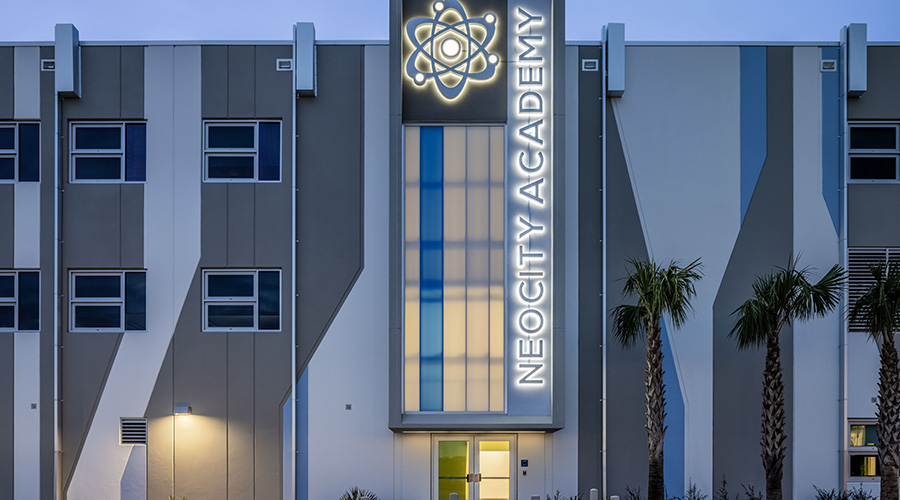Engaging Staff, Occupants for Sustainable Success
Many may wonder, if they're fortunate enough to be part of a Platinum project, how much room is there really to improve? Both Denise and Pearlman say they're asked that question frequently, and Denise says the answer to the question is a question: "At what point do you stop improving?"
He says that one important approach is to keep an eye on new technologies. As technology improves, there will be numerous opportunities to get better.
Another approach is to be vigilant about looking for new ideas. Oftentimes the hardest part of keeping the momentum going after LEED certification is keeping staff and occupants interested in sustainability. Because LEED was born and grew up as more an architect tool to be used for new construction, LEED certification is still often perceived as the end. But keeping facility staff engaged in the organization's LEED-EBOM initiative is actually a huge opportunity to continuously improve.
Denise has instituted a policy, approved by his client Adobe, whereby anyone who earns a LEED Accredited Professional designation gets a one-time 2 percent pay increase. "The idea is that we wanted to make LEED fun," he says. "It's good for their resumes and for their knowledge, so it just makes sense. LEED is not more work or harder work, it just a change in work. So to incentivize that, to put a positive spin on it, makes sense."
Keeping sustainability and the LEED strategies high on the priority list should be a high priority itself, says Grinnalds, who manages four LEED-EB certified buildings and a staff of 205 at Johns Hopkins School of Medicine, and is working on recertifications. "We talk about our initiatives at every staff meeting," he says. "It's always on the agenda." Grinnalds says he's working closely with the Office of Sustainability to identify champions for the LEED efforts, especially recycling, in different buildings and lab departments of the School of Medicine. The goal is to standardize recycling — essentially a branding effort — across all buildings so students recognize more easily how to recycle. Eventually, says Grinnalds, when the School of Medicine begins composting its organic waste and implementing new purchasing standards so that more trash can be recycled, almost no trash will end up in landfills.
Keeping occupants informed and thereby garnering their help is a huge part of continuous improvement as well. That's because occupant behavior can play a larger role than many facility managers may realize in saving on operating costs.
At IFC, the team is in the midst of a process they call the "10-Minute Tune Up." IFC invests in sustainability and emission reduction projects around the world — it's a member of the World Bank — so a goal of carbon neutrality is a high priority. Even with a LEED Platinum certification, IFC must stay diligent regarding occupant behavior to achieve that lofty goal. Led by Sarah Raposa, IFC's footprint program officer, staff is going around to each and every one of the 2,500 employees at the company's headquarters to spend 10 minutes with them discussing the organization's LEED certification, carbon emissions goals, and then explain to them what they can do to help.
"LEED is an excellent leverage point to engage occupants in broader corporate goals," says Raposa. "It's an anchor in broader outreach, and it shows we're very serious about our sustainability goals."
Easy Steps
Included in the 10-Minute Tune Up are items like encouraging occupants to use public transportation by letting them know about a $20 to $30 monthly credit the company would provide, explaining that IFC's water fountains are all filtered and purified so there's no need to purchase bottled water, showing them how to set their computer monitors to "sleep" after five minutes, and making sure they know who their "Department Footprint Champion" is.
In total, Raposa and her team go over just under 30 relatively easy steps all occupants can do, that if done collectively, can add up to huge savings in energy, water and waste. Many facility managers may scoff at the time such an initiative must take, but Raposa says she believes the savings can be significant enough to make the time more than worth it.
"Individual behavior is one of the biggest opportunities for continuous improvement," says Pearlman. And LEED has created the credibility within the organization to assure occupants that sustainability is of the highest importance at IFC.
"Certification is a nice piece of recognition," says Pearlman. "But the rubber really meets the road when you keep improving."
Related Topics:












